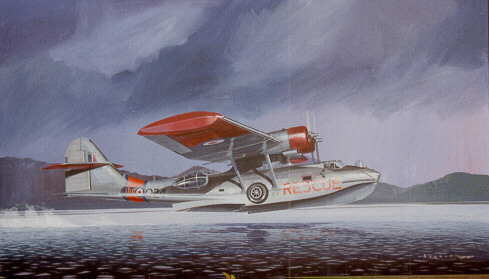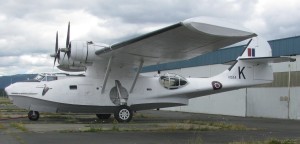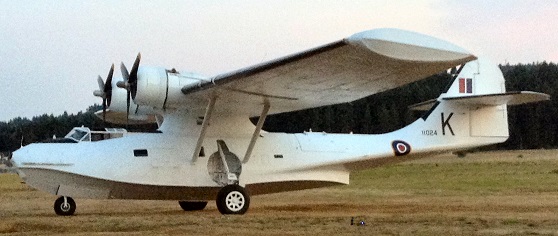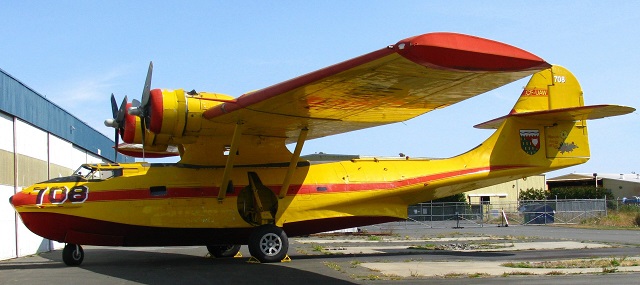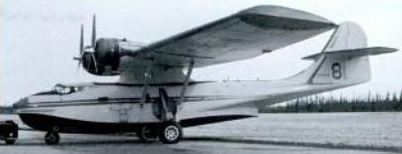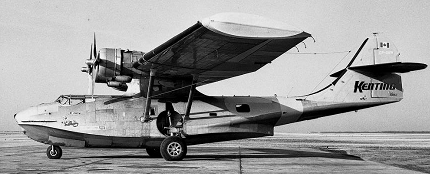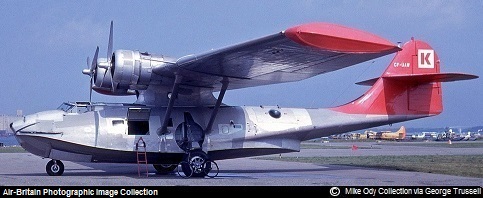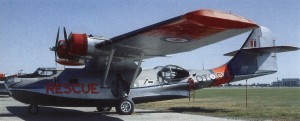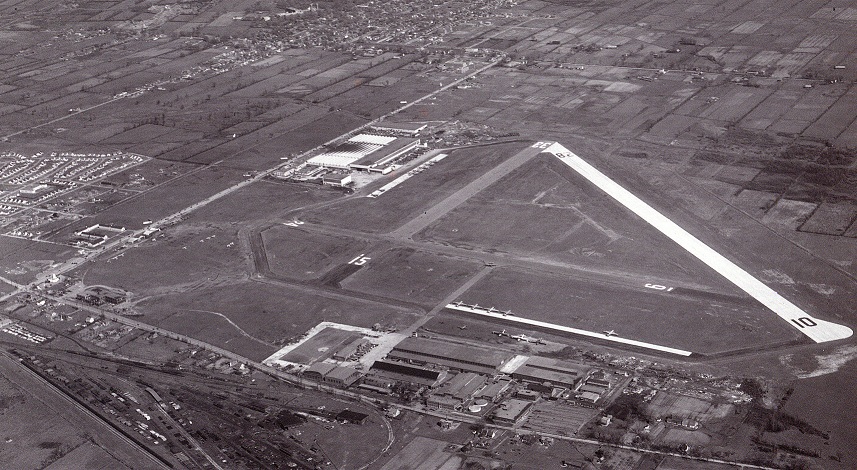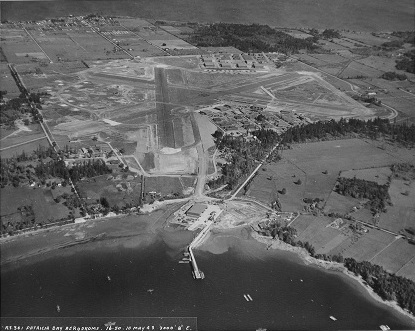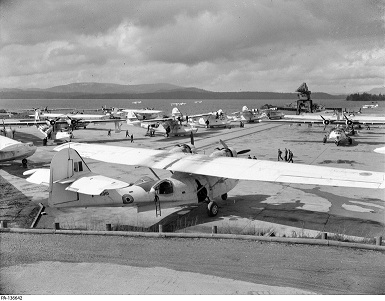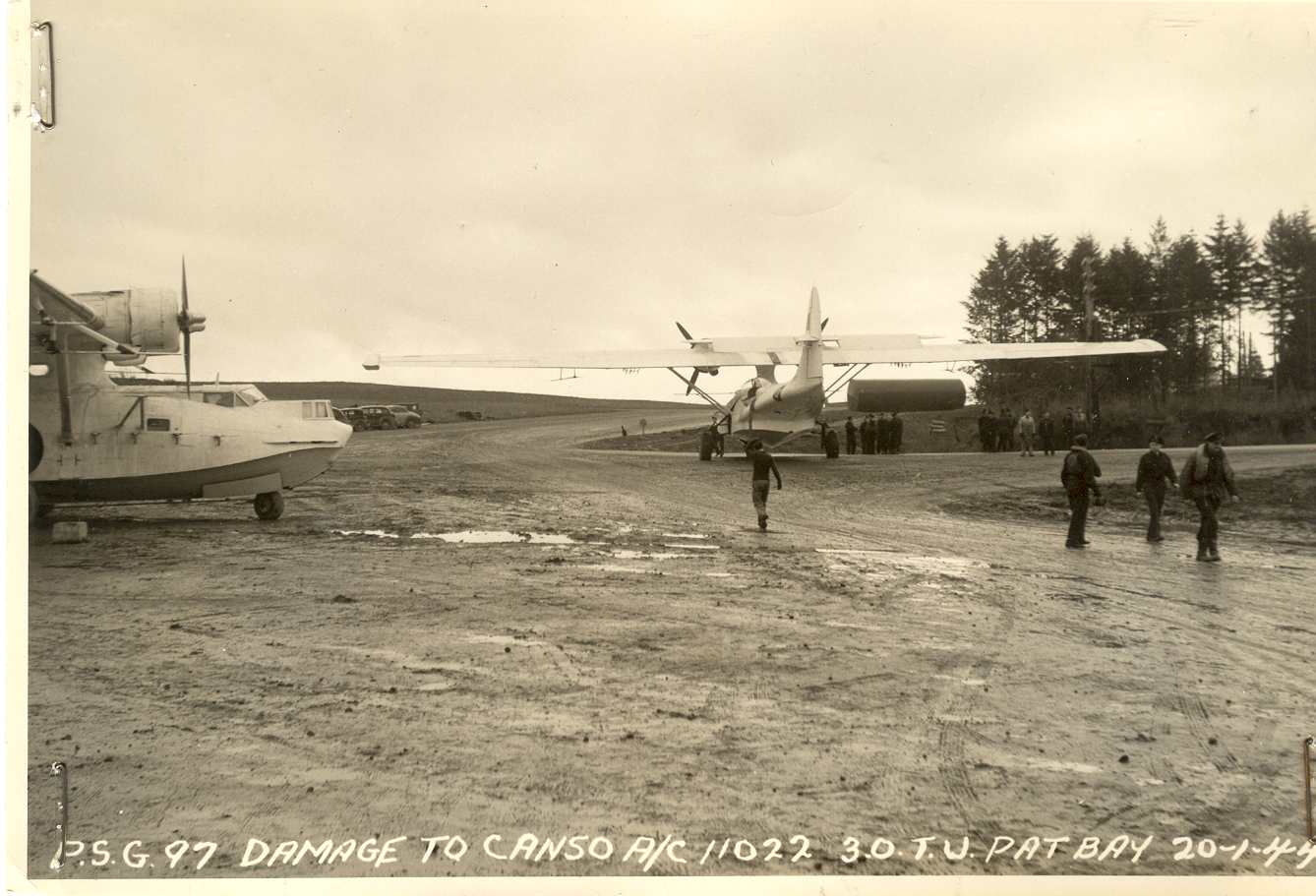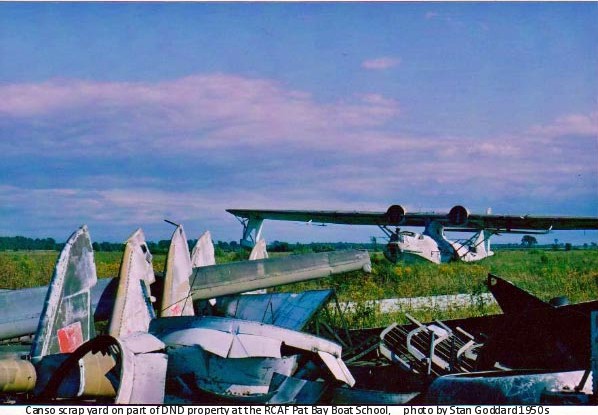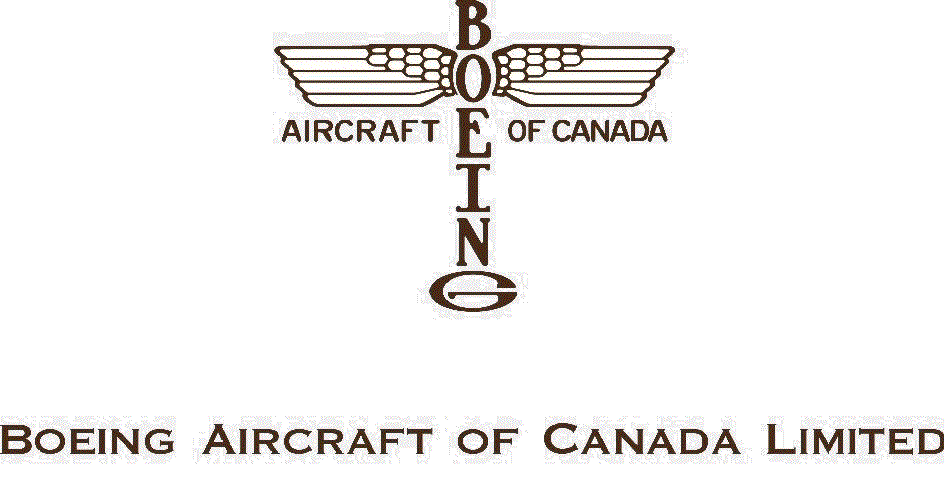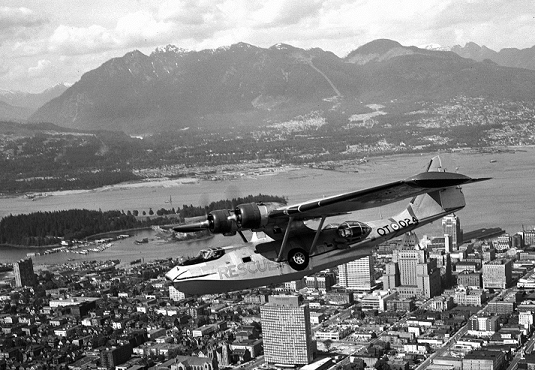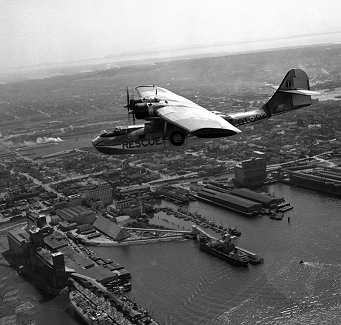 OUR PLANE
OUR PLANE
Painting of R.C.A.F. 11024 Courtesy of Canso Investments Ltd.
CONSOLIDATED PBY-5A C-FUAW
1957 to 2021
C-FUAW Victoria – July 2018
C-FUAW Victoria – August 2015
C-FUAW [RCAF Canso 11024] Victoria – 2013
CF-UAW Saskatchewan Government April 1991
CF-UAW Kenting Aviation, Toronto – 1971
CF-UAW Kenting Aviation, Toronto – 1968
RCAF Canso 11024 Vancouver – 1957 [CF-UAW]
PBY-5A C-FUAW HISTORY
Historical military and civil Identification:
R.C.A.F. 11024
QT O24
CF-UAW
C-FUAW
![]()
Cartierville Airport
A brief history of Vickers Aircraft.
Saint-Laurent’s relatively flat landscape attracted aviators in the 1920’s to a site called “Cartierville Airport” even though the airfield was in Saint-Laurent.
In 1935 Noorduyn Aviation began building planes there and had as many as 12,000 employees during the War. In 1942 Vickers built a huge plant to manufacture aircraft and other specialized transportation equipment.
Increasing international tensions, both in Europe and the Far East, led Canada to look at its own defences.
On July 25, 1941, the Canadian Department of National Defence awarded Vickers of Canada a contract for 39 PBY’s and asked Vickers to plan and supervise the construction of a new aircraft production facility in the Montreal area which, when completed, Vickers would manage on the government’s behalf. The site chosen was Cartierville Airport in suburban Ville St. Laurent.
Work on the Cartierville plant began in May 1942 and the first RCAF Canso assembled there rolled out in September 1943. In the interim, Vickers had received a DND order for a further 100 PBY-5’s and another from the U.S. for 230 OA-10As, a further version of the PBY-5.
Cartierville Airport 1946 – Notice the PBY Canso’s in front of the Factory
With Increasing tensions in the Pacific theatre, the Royal Canadian Air Force commenced a survey of the Canadian West Coast, looking for new base sites.
This task initially fell to No. 4 (Flying Boat) Squadron commanded by Flight Lieutenant F.J. Mawdesley and by April 1937 he had completed a general survey to the northern tip of Vancouver Island and expanded the study to include the northern mainland coast. These findings were the genesis of a permanent service base at Patricia Bay on Vancouver Island.
With surrounding flat terrain and easy access to Pat Bay, the site was considered to be a strategic location for coastal defense.
Not operational until May 1940, Pat Bay airport, rudimentary in its luxuries became the home of #3 Operational Training Unit (O.T.U.) in early November of 1942 and the first base for R.C.A.F. PBY-5A Canso 11024 in 1943.
PBY-5A designation RCAF 11024 rolled off the production line in the fall of 1943 and TOS (taken on strength) December 7, 1943 by Western Air Command. RCAF Canso 11024 was ferried from Canadian Vickers manufacturing plant in Cartierville Quebec arriving at #3 Operational Training Unit RCAF Station Pat Bay on Vancouver Island.
PatBay airport 1943 Photo courtesy of BC Aviation Museum
The first operational record of flying was noted on January 23, 1944. The No. 3 O.T.U. Daily Diary entry showed 11024 (coded “K”) conducting night flying dual instruction with students of Course #20. It wasn’t two days later that the aircraft suffered some minor damage and was out of commission until February 5th.
The next four months for “K” were busy. Training missions included over 40 flight / navigation exercises, 10 bombing and 6 gunnery. Other flying included air tests, air compass swings, photo work, dingy drills, water mooring and one search. With up to 20 other Canso’s and 3 Lysanders, “K” provided support to training courses number 20 through 26 and Special Course I.
Typically a N0.3 O.T.U. course included 6 Captains, 6 Co-Pilots, 6 Navigators, 12 Flight Engineers and 18 Wireless Operator/Air Gunners (WAGs).
By the first week of June 1944 the Royal Air Force N0. 32 O.T.U. was re-assigned as R.C.A.F. No 6 O.T.U. and relocated to Comox, British Columbia from Pat Bay’s East Camp. No. 3 O.T.U. was quick to move into many of the vacant buildings and hangers, giving them added ramp and storage space. It may be the reason that there was no record of 11024 flying until the first week of July.
Photo Courtesy of Al Botting and the Cdn DND
On July 7th “K” was assigned a trip to Sea Island Vancouver BC. Following a water landing, the aircraft proceeded up the slipway and at the top, the brakes failed to function and the aircraft rolled down the other side. “K” contacted a fixed fuel tank and a building.
Fortunately there were no injuries to crew members, however the PBY sustained serious damage to the wing tips, floats and nose – a category “C” accident.
11024 was sent to Canadian Pacific Airlines on the field where it underwent repairs until October 12 and was then stored.
Photo Courtesy of the BC Aviation Museum
N0. 6 Bomber Reconnaissance (br) Squadron
The primary objective of Western Air Command (WAC), following the attack on Pearl Harbour in December’ 41, was the defense of Western Canada. Like a giant chess game, this involved the positioning and repositioning of aircraft, personnel and resources along the West Coast of British Columbia.
No. 6 BR Squadron relocated from Alliford Bay on the Queen Charlotte Islands (now Haida Gwaii) to Coal Harbour, located approximately 10 miles (16 km) Southeast of Port Hardy on Vancouver Island in late April 1944, displacing No. 120 (BR) Squadron. The Squadron began operation there with 6 Catalina’s and 3 Canso’s but by years end the fleet included 3 PBY Catalina’s, 5 PBY Canso-5A’s and 1 PBY Canso 5.
In the late hours of February 8, 1945, Canso 11007 of No. 6 BR Squadron crashed near Tofino following an engine failure shortly after take-off. Of the eleven crew members and passengers, the pilot sustained serious injuries and the remaining occupants minor injuries. The PBY Canso was a write-off (Category “A” accident). The wreckage remains at the site to this day.
Eighteen days after the accident, on February 26th, PBY Canso 11024 piloted by S/L Chasson arrived at Coal Harbour to replace the crashed PBY.
The first few flights in early March were in a transport role, including trips to Alliford Bay, Port Hardy and Comox British Columbia.
The first operational mission for PBY 11024 was a patrol on March 10, 1945 and it was not an auspicious event. Captained by S/L Chasson, the trip was marred by bad weather, severe icing and an unserviceable radio. The Station Daily Records deemed it “Patrol Incomplete”.
A typical patrol mission was on a planned route and could last up to 10 hours or more. The crew was tasked with:
– Ship Identification and interdiction if necessary, noting the ship’s speed and direction.
– Aircraft location and Identification (including enemy Fu-Go Fie Ballons);
– “Coastal Crawl” for any near shore activity;
– Practice Bombing
– Circuits at Destination
On March 15th, our PBY 11024 transported a group of personnel on a familiarization tour of Alaska. After stopping at Alliford Bay for a briefing,
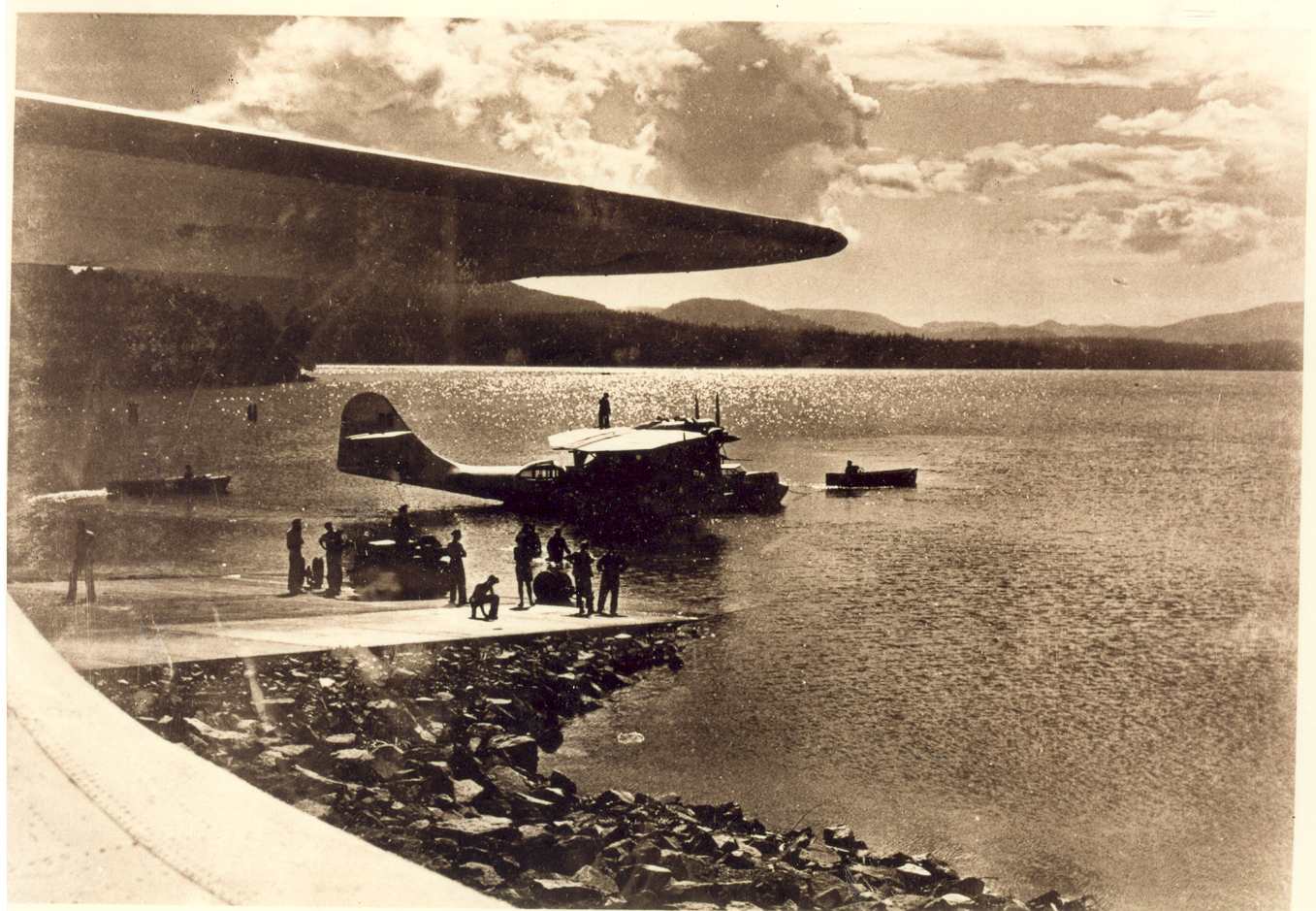 Photo Courtesy of the BC Aviation Museum
Photo Courtesy of the BC Aviation Museum
the group continued on to Yakutat and eventually Anchorage and Kodiak. they returned to Coal Harbour after the ten day trip piloted by F/L Fraser.
Over the next 2 1/2 months 11024 and crews were assigned over twenty operational patrol missions, the last on June 4, 1945. During this period the crews identified 15 ships and one aircraft. Several of the missions were either cancelled or not completed due to weather. the Coal Harbour Meteorological Office calculated that there were 26 days with rain in the month of April. Flights after that included radio range exercises, pilot navigation exercises, transport and a couple of aircraft searches.
On August 1, 1945, No. 6 BR Squadron conducted it’s last operational patrol. the Daily Diary notes “No. 6 BR Squadron became non-effective as at 23:59 hrs today. On August 7, 1945 the last remaining aircraft left Coal Harbour for storage at Moose Jaw, Saskatchewan.
Pat Bay PBY bone yard by Stan Goddard
The last entry in the Squadron Diary reads: “Sunny and hot, Canso “A” 9800, Flying Officer McIntyre and Canso “A” 11024 Flying Officer Steinbart left in the afternoon for Moose Jaw. At 23:59 hours this Squadron went out of existence. Strength – NIL.”
Photo Courtesy of the BC Aviation Museum
To be continued … 1945 – 1950’s to 2020
BOEING SEA ISLAND
Based at R.C.A.F. Base Sea Island, PBY Canso 5A QT – 024 (C-FUAW) on patrol over Vancouver BC early 1950’s.
In 1939 Boeing of Canada, headquartered at Vancouver, B.C., built a huge manufacturing factory on Sea Island beside the middle arm of the Fraser River to build aircraft for the war effort. The Boeing Aircraft Company’s Sea Island, BC plant was well known during WWll for building Consolidated PBY Aircraft for off-shore air patrols.
Boeing Aircraft of Canada built 362 PBY flying boats and amphibians designed by Consolidated Aircraft of San Diego for the Royal Canadian Air Force.
The RCAF called the PBY’s Cansos.Read More
QT-024 on patrol (possibly) over Burrard Inlet early 1950’s
